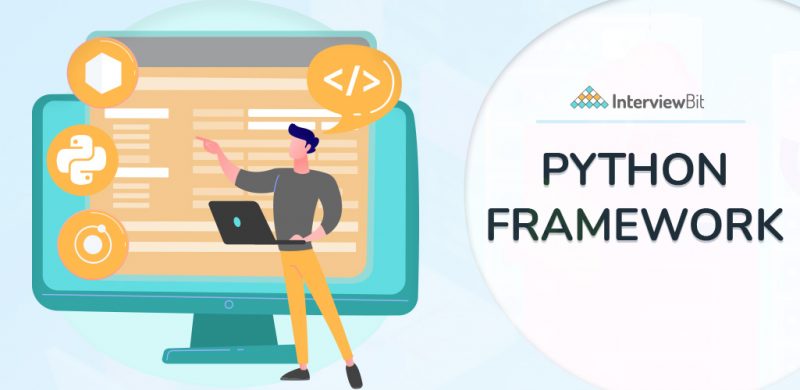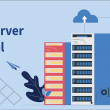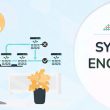- Introduction
- Types of Python Framework
- Why Use A Framework?
- Top Python Frameworks List
- 1. Bottle
- 2. Django
- 3. Web2Py
- 4. Flask
- 5. CherryPy
- 6. Aiohttp
- 7. CubicWeb
- 8. Dash
- 9. Falcon
- 10. Giotto
- 11. Growler:
- Conclusion
- FAQs
- Q.1: What is the Python Framework?
- Q.2: Which Framework is best for Python for Beginners?
- Q.3: How do you create a Framework?
- Q.4: Is Django the best Python Framework?
- Q.5: Is Django better than Flask?
- Additional Resources
Introduction
Python is one of the most popular languages in today’s era. Guido Van Rossum is the person behind the creation of this language. It came into existence in 1991 as Python 0.9.0. It is a dynamically typed, interpreted, and object-oriented language that helps programmers write code in an easy clear logical way. Python contains various libraries and frameworks for every possible technical domain. Before coming to the types and usage of different frameworks let’s discuss what is a framework.
The framework is a collection of modules or packages. Using Python frameworks helps in reducing development time as it provides a prebuilt implementation of redundant tasks and one doesn’t need to worry about the common details like protocols, sockets, etc and they just need to focus on application logic. Each framework has its own pros and cons so the choice of framework totally depends on the project requirements and also on the developer’s preference. The few basic advantages of using frameworks are they are open-source, secure, well-documented, and efficient.
Some Features of Python frameworks that are beneficial for Building Web Applications are Listed Below:
Confused about your next job?
- URL Routing: It is the mapping of the URL to the code created for the web page.
- Database Connection
- Form handling and validation: This is the most common functionality of a web page which takes some input in the form and then performs validations.
Frameworks provide web security against cross-site.
Types of Python Framework
Python has three categories of frameworks and those are full-stack framework, micro-framework, and asynchronous framework. Now, let’s understand what each category offers:
1. Full Stack Framework: As the name suggests this kind of framework provides a complete solution for web development like form generator, form validation, template layouts, etc. This type of framework can be utilized for any type of application. It is a little bit complex to use.
2. Micro Framework: It’s a lightweight, easy-to-use framework and doesn’t provide any extra features like a data abstraction layer, form validation, etc. Developers have to put in lot of effort into adding code manually to get additional features and functionalities. This is useful for small applications.
3. Asynchronous Framework: This framework is gaining popularity in recent times and it uses asyncio library to work. This kind of framework mainly helps in running concurrent connections in huge amounts.
Why Use A Framework?
Frameworks are widely used by developers to reuse the code for similar types of HTTP operations and to define the structure of an application with predefined functionalities. Frameworks make the life of a programmer easier as these frameworks design the project in such a manner that any other programmer who knows the framework can easily take over the application. Although there is an option of using libraries, people prefer to use frameworks as it is more idiomatic, and reliable and it’s easy to extend the functionalities using the tools provided by the frameworks. Using a library can be as challenging as performing any specific operation one has to learn the functionalities to perform that operation. There is no particular flow in libraries but in the framework, there is a basic flow and then programmers are in better control of the application.
There are various frameworks of Python like:
- Bottle
- Flask
- Django
- Web2py
- AIOHTTP
- CherryPy
- Dash
- Falcon
- Growler
- UvLoop
- Pyramid
- Sanic
- CubicWeb
- TurboGears
- Hug
- MorePath
These are some of the frameworks used in Python, we will be discussing each in the coming topic.
Top Python Frameworks List
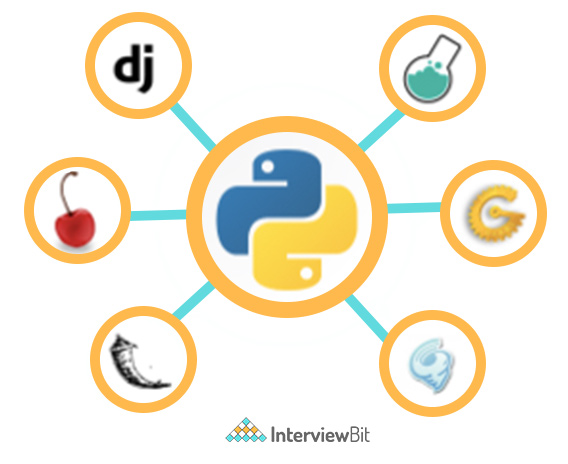
Now we will look at some top Python frameworks in detail:
1. Bottle
This framework is ideal for small applications and is mainly used for building APIs. It is one of the most used Python web frameworks as it doesn’t need any other dependency apart from the standard Python library to make the application, programmers simply can work with hardware. This framework creates a single source file and it comes under the micro-framework category.
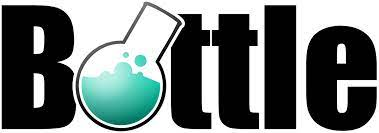
Key Features of Bottle Framework are listed below:
- Using this framework one gets access to form data, cookies, file upload, and other HTTP-related metadata.
- The Request-dispatching route is another key highlight of this framework.
- It offers a built-in HTTP server
- Has plugin support for various databases.
- Third-party template engines and WSGI/HTTP servers can also be used.
2. Django
It comes under the category of full-stack framework, which has gained popularity in recent times and is considered as one of the top python web frameworks. It follows the principle of Don’t Repeat Yourself(DRY).
Django has many built-in libraries and it gives the aid to migrate from one database to another. By default Django can work on these few databases: MySQL, Oracle, PostgreSQL, and SQLite, the rest databases can be used with the help of third-party drivers. For mapping objects to database tables, it uses ORM.
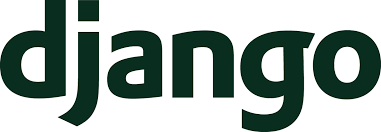
Key Features are:
- Security is the most important point of this framework. When compared with other python frameworks Django proves to be more secure.
- It provides URL routing
- It provides authentication support
- Django offers a database schema migration feature.
- It provides adequate prebuilt libraries for full stack development.
- Django follows MVC-MVT architecture. In this architecture, the developer just has to give a model, view, and template then the user does the mapping of it to the URL and then the rest of the tasks are handled by Django itself.
3. Web2Py
It is a framework of the full stack category. It is an open-source and scalable framework that provides support to all operating systems. Web2Py has its web-based IDE that has all the features that an IDE should have like a debugger, a code editor, and one-click deployment. It cannot use python 3.

Key Features:
- The ticket system is there in which a ticket is sent to the user if something goes wrong with the framework.
- It is platform-independent.
- Backward compatibility is there which makes sure that there is advancement without breaking the ties with previous versions.
- Readability of multiple protocols
- Provides role-based access control
- There is no prerequisite for its installation or configuration.
- Give support for internalization
4. Flask
Another lightweight and micro-framework that is popular is a flask. Due to its modular design, it is more easily adaptable. Using this framework developers can make solid web applications and the creation of such applications makes it easy to use any type of extension.
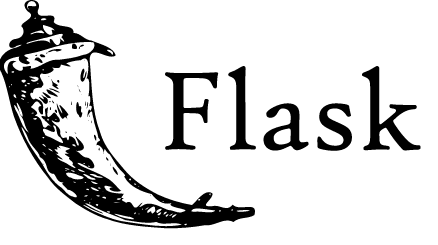
Key Features:
- Compatibility with Google App Engine
- Aids jinja2 template and Werkzeug WSGI toolkit
- Inbuilt debugger
- Provision for unit testing
- For enabling client-side sessions Flask provides support for cookies
- Restful request dispatching
- Another key highlight of this framework is it is Unicode based
- HTTP request handling is also supported
- This framework also provides the option of plugging in any ORM
5. CherryPy
One of the oldest microframeworks is CherryPy. It has a minimalistic approach. CherryPy is an open-source and object-oriented framework. One can use any technology for accessing data or template creation. Applications created using this framework are stand-alone python applications that have a multithreaded server embedded in them.

Below are some of the key features of CherryPy:
- One can run multiple servers simultaneously using this framework
- Platform independent.
- Coverage, profiling, testing are some other built-in features supported y the framework.
- It runs on Android.
- It provides a good configuration system
- HTTP WSGI compliant thread pooled web server is there.
- Caching, encoding, and authentication are some more features provided by the framework.
6. Aiohttp
It’s a kind of asynchronous framework. This framework can serve as a client framework also apart from being the server web framework. It is based on Python 3.5+ features like async and await. Python’s asyncio library has the main role in the framework’s functioning. aiohttp makes use of request objects and routers for redirection of queries.
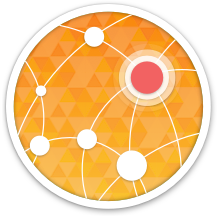
Key features of the framework are listed below:
- Building views is easy through this framework
- It provides middleware support
- Pluggable routing and middleware support are other features that make it a top-using framework.
- It provides support for both server and client-based Web Sockets.
7. CubicWeb
It is a full-stack Python framework that makes use of cubes instead of using separate models and views. It is an open-source, free-to-use, and semantic web framework.

Key Features of the framework are:
- It provides support for multiple databases
- Provides security and reusable components
- Uses RQL(relational query language) for simplifying data related queries
- Provides support for Web Ontology Language (OWL) and Resource Description Framework(RDF)
8. Dash
It is an open-source micro-framework used for developing analytical web applications. This framework is more popular among data scientists who are not much aware of web development. For frontend rendering it uses ReactJS. Applications built using dash can also be used to run web servers like flask and then do the communication with JSON packets through HTTP requests. Since dash applications can be rendered in the browser and deployed in the server it is said to be cross-platform and mobile-ready applications.

Key Features of the framework are:
- Doesn’t require much coding to develop applications
- A high level of customization is offered
- Error handling is easy
- LDAP integration (Dash Deployment Server)
- Plugin support is also there
9. Falcon
It is another micro framework that focuses on building web APIs. This framework is widely used by organizations like LinkedIn, OpenStack, RackSpace. It allows developers to make clear designs for HTTP and REST architectures.
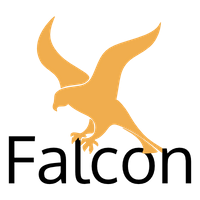
Key Features:
- Aims at having 100% code coverage
- Upfront exception handling is supported by this framework
- It is a very extensible and optimized codebase
- Easy access for headers and bodies is offered by its request and response classes
- WSGI helpers and mocks are used for unit testing
- Cython support increases the speed of the framework
10. Giotto
It is a full-stack MVC-based framework that separates model, view, and controller in order so that developers and system admins can work independently. Giotto enables users to build apps on top of the web, IRC(Internet Relay Chat), and command-line by including a controller module.
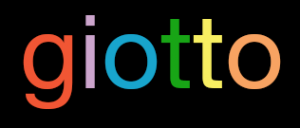
Key Features:
- Provides feature of automatic URL routing
- Provides characteristic of Jinja2 for HTML templates
- Functional CRUD patterns
- Generic model and view
- Multiple pluggable controllers are there
- Database persistence with SQLAlchemy
11. Growler:
It is an asynchronous type of framework built on the python asyncio library. It is based on NodeJS and an express/connect framework. This framework handles the request by passing it through middleware technology.
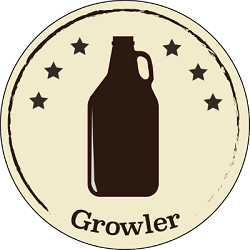
Key Features:
- For writing clean and reusable code decorators are used.
- The entire application can be zipped into a single execution file by using the ziapp module.
- Also provides support for the multitude of the open-source package
Conclusion
In this blog, we have discussed different types of Python frameworks that are beneficial for building web applications. Each framework is discussed with its key features and these frameworks can easily meet the requirements of one’s project and business. The choice of the framework is totally on the developer according to their project needs.
FAQs
Q.1: What is the Python Framework?
Ans: Python framework is a collection of modules or packages that are useful for creating web applications. The framework reduces the development time by providing prebuilt implementation of redundant tasks. Hence frameworks make the life of a developer easy.
Q.2: Which Framework is best for Python for Beginners?
Ans: For beginners, Flask and Django is a better option to start with but Flask can be more beneficial as it is very simple and easy to learn and requires fewer lines of code as compared to Django. Using this framework web development becomes easier.
Q.3: How do you create a Framework?
Ans: For developing a framework one must be aware of what it consists of, a framework mainly consists of URL routing, views, models, and templates. First of all, try to learn about them and then create each section and then connect them. Once you get all the components in a running state try to build a simple project with it and test it. After the framework is complete, package it up and upload it to PyPI.
Q.4: Is Django the best Python Framework?
Ans: Django can be considered the best framework as its development speed is fast and easy, from a technical perspective it contains almost every feature, and the rest can be made available using third-party drivers. Also, this framework is a good option for database-based websites.
Q.5: Is Django better than Flask?
Ans: Both Django and Flask are very popular frameworks. If you are starting your work on the web then Flask is a better option since in this framework developers have to do everything on their own while Django offers many extraordinary features and one can learn new concepts using this framework very easily. So, one can go with any of the frameworks but to start with it’s better to go with Flask and then Django as its learning curve is a little complicated.
Additional Resources
- How to Become a Python Developer
- Python Projects
- Python Cheat Sheet
- Python MCQs With Answers
- Python IDE and Code Editors
- Python Interview Questions
- Python Developer Salary
- Features of Python
- Difference Between Python 2 and 3
- Python Books
- Python Developer Resume
- Applications of Python
- Python Developer Skills
- Python Libraries
- Python vs Java







 Join WhatsApp Group
Join WhatsApp Group
